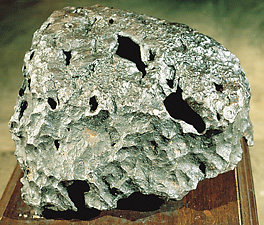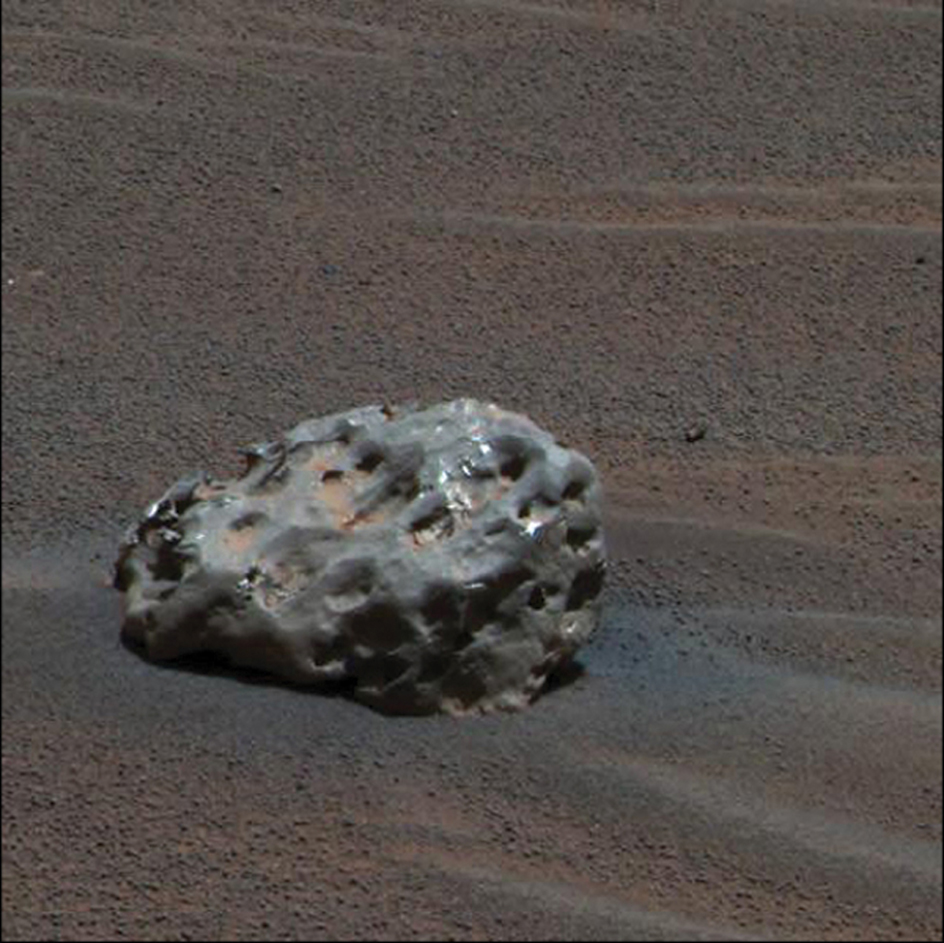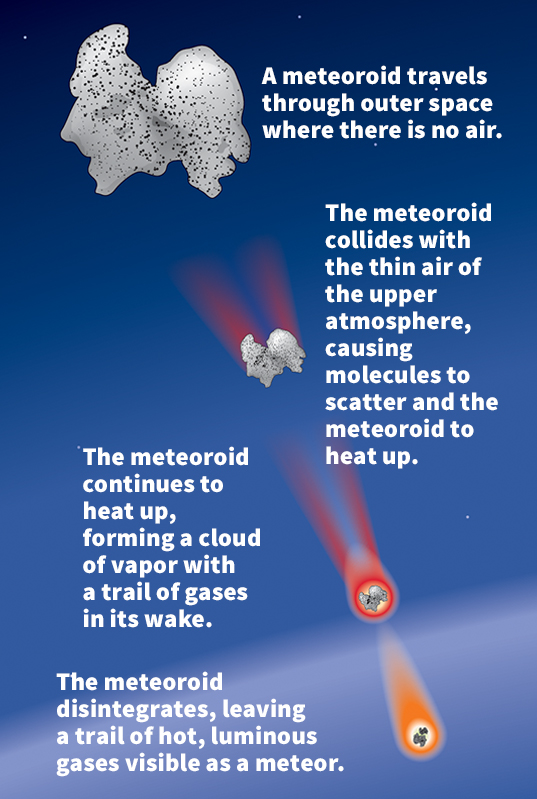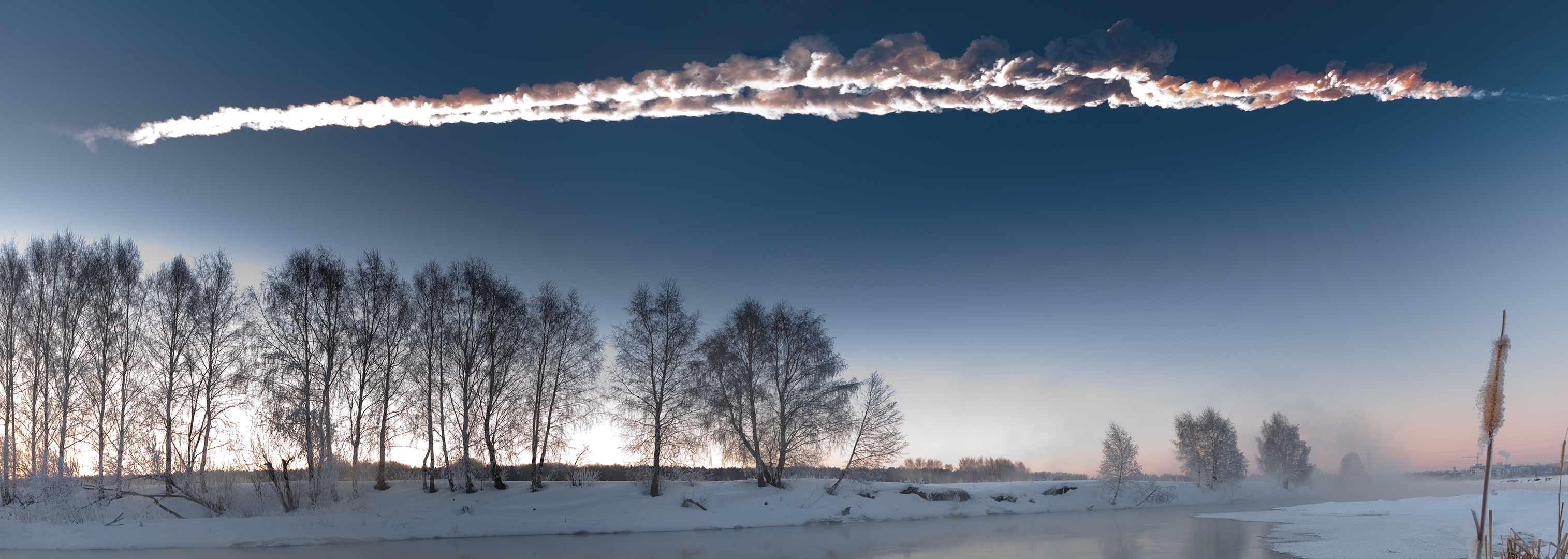Meteor is a streak of light that appears in the sky. People often call meteors shooting stars or falling stars because they look like stars falling from the sky. The brightest meteors are known as fireballs or bolides.

A meteor appears when a piece of matter enters Earth’s atmosphere from space at high speed. Such a piece of matter is called a meteoroid. Most meteoroids that cause visible meteors are smaller than a pebble. As the meteoroid collides with the air, it is heated so that it glows, creating a shining trail of hot gases. Most meteoroids break apart in a second or less.
Meteors glow usually at about 50 to 75 miles (80 to 120 kilometers) above Earth’s surface. Some fast meteors leave a green glow in their path called a wake that fades in less than 10 seconds. The brightest leave an orange glow called a persistent train that can last for minutes.
Meteoroids travel around the sun in a variety of orbits and at various speeds. The fastest ones approach Earth at about 26 miles per second (42 kilometers per second). Earth orbits the sun at about 18 miles per second (29 kilometers per second). Thus, when meteoroids hit the atmosphere head-on, the combined speed may reach about 44 miles per second (71 kilometers per second).
Meteor showers
occur when Earth travels through a stream of meteoroids. The rate at which meteors appear generally increases, peaks, and then decreases as Earth moves in and then out of a stream. As seen from the ground, all the meteors in a particular shower appear to come from the same direction in the sky. This direction is called the radiant of the shower. Annual meteor showers occur when Earth moves through a certain stream during the same span of days or weeks each year.
The meteoroids in streams typically come from comets. Some meteoroids result from the breakup of a comet. Others are produced when a comet nears the sun. The sun’s heat vaporizes ice on the comet’s surface, ejecting meteoroids. Energy from the sun blows the smaller particles outward, forming the comet’s dust tail. The larger meteoroids move along with the comet but spread out over time. The meteoroids return to Earth as a continuous stream called a dust trail. Rarely, Earth crosses a dust trail, resulting in a brief outburst of meteors. Outbursts that produce more than 1,000 meteors per hour are called meteor storms.

One of the most spectacular meteor storms known took place on Nov. 13, 1833. It came from meteoroids released by Comet Tempel-Tuttle on its previous orbit, in 1799. The event marked a dramatic outburst of the annual Leonid shower, which occurs in November as Earth passes through meteoroid streams left by Tempel-Tuttle. Like other showers, the Leonids are named for their radiant, which is in the constellation Leo.
The parent body
is the comet or other object that produces a particular meteor shower. The characteristics of a shower depend in part on the type of parent body.
Long-period comets
take more than 200 years to orbit the sun. Many such comets approach Earth head-on. As a result, meteors from these comets tend to be fast. Brief showers may occur many years after the comet’s visit. Such showers result from Earth meeting the dust trail after it has traveled once around the sun. The dust trails of long-period comets typically disperse after one orbit. The Lyrid meteor shower, which occurs in late April, is an annual meteor shower whose parent body is a long-period comet. The Lyrids originate from Comet Thatcher, which takes 415 years to orbit the sun.
Short-period comets
orbit the sun in fewer than 200 years. Those with orbits longer than 20 years are called Halley-type comets, after Halley’s Comet. Halley-type comets include Comet Tempel-Tuttle. Another dust trail forms each time such comets orbit the sun. Multiple meteor outbursts may occur as Earth meets trails from different orbits. Halley’s Comet is the parent body of two annual meteor showers: the Eta Aquariids from mid-April through May and the Orionids in October and early November.
Short-period comets that take fewer than 20 years to orbit the sun are called Jupiter family comets. At their greatest distance from the sun, near Jupiter’s orbit, the comets move slowly, and Jupiter’s gravity can dramatically alter their orbits. Such comets and their trails pass near Earth briefly and usually cause only a few meteor outbursts. For example, Comet Giacobini-Zinner was the parent body of the impressive Draconid meteor storms of 1933, 1946, and 2011. However, because of the shape of the parent comet orbit, the intensity of the Draconid meteor showers varies greatly from year to year. Some Jupiter family comets, however, produce regular meteor showers. Comet Tuttle, for instance, is the parent body of the Ursids, seen in late December.
Other parent bodies
besides active comets occasionally produce meteor showers. The Quadrantid meteor shower in early January is thought to derive from 2003 EH1, an asteroidlike object that may be an extinct comet. The parent body of the Geminid meteor shower, in December, is 3200 Phaethon, a strange asteroid that shares some features with comets.
Other planets and moons
also are struck by meteoroids. For instance, scientists have seen flashes on Earth’s moon caused by meteoroids hitting its surface.
On Mercury, meteoroids can hit at speeds up to 84 miles (135 kilometers) per second. Such high speeds result from the rapid motion of Mercury and the meteoroids, which orbit faster near the sun.

Jupiter’s strong gravitational pull causes meteoroids to hit the planet’s atmosphere at speeds of up to 49 miles (79 kilometers) per second. Impacts on nearby moons tend to occur at similarly high speeds.
Meteorites
are meteoroids that reach the surface intact. Most large meteorites come from asteroids, which typically consist of stronger material than that of comets. Such material is less likely to break up during descent.
There are three kinds of meteorites: (1) stony, (2) stony-iron, and (3) iron. Stony meteorites consist of minerals rich in silicon and oxygen. One group of stony meteorites, called chondrites, consists of pieces of the same material from which the planets formed. Another group of stony meteorites, the achondrites, were once part of an asteroid large enough to have melted and separated into an iron-rich core and a stony crust. Achondrites come from the outer crust. Iron meteorites, made mostly of iron and nickel, come from the core. Stony-iron meteorites, made of silicon-based stone and iron-nickel metal, come from a region between the crust and core.

If a meteoroid travels too fast, it may explode before reaching Earth’s surface. One such object exploded about 5 miles (8 kilometers) above the Tunguska River area in central Siberia in 1908, leaving an area roughly 31 miles (50 kilometers) in diameter of felled and scorched trees. In 2013, a meteor exploded about 15 miles (25 kilometers) above Chelyabinsk in eastern Russia. The 65–foot (20–meter) meteor may have unleashed 30 times the energy of the atomic bomb dropped on Hiroshima, Japan, in 1945. The Chelyabinsk blast injured over 1,000 people, most of them hit by glass from shattering windows.
Impact craters and basins.
When an asteroid or comet strikes the surface of a planet or moon, it can produce an impact crater. Impact craters are bowl-shaped depressions with shallow, flat floors. They often have uplifted centers. Particularly large impact craters are sometimes called impact basins.
Scientists have found more than 120 impact craters and basins on Earth. One of the most famous, Meteor Crater in Arizona, is about 4,180 feet (1,275 meters) across and 570 feet (175 meters) deep. It formed nearly 50,000 years ago when an iron meteorite weighing 330,000 tons (300,000 metric tons) struck Earth.

Most impact craters and basins larger than the Meteor Crater are heavily worn away or have been buried by rocks and dirt as Earth’s surface changed. One of the largest known of these is the Chicxulub << CHEEK shoo loob >> Crater centered in Mexico’s Yucatán Peninsula. The crater is about 112 miles (180 kilometers) in diameter. Rock samples obtained by drilling into the crater indicate that an asteroid struck Earth there about 65 million years ago. Many scientists believe that climate changes caused by the impact led to the extinction of much life, including the dinosaurs.
